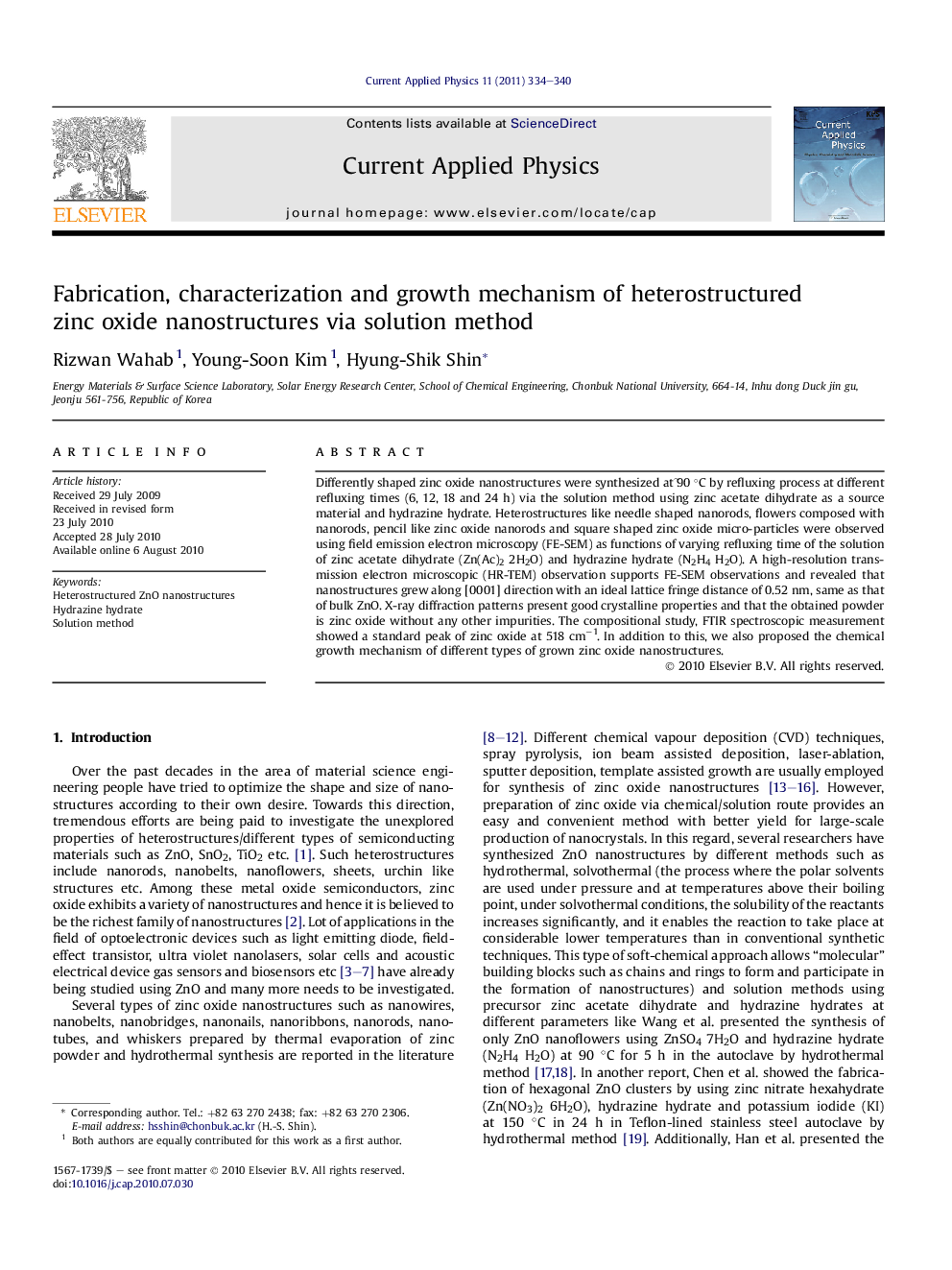| Article ID | Journal | Published Year | Pages | File Type |
|---|---|---|---|---|
| 1787755 | Current Applied Physics | 2011 | 7 Pages |
Differently shaped zinc oxide nanostructures were synthesized at ˜90 °C by refluxing process at different refluxing times (6, 12, 18 and 24 h) via the solution method using zinc acetate dihydrate as a source material and hydrazine hydrate. Heterostructures like needle shaped nanorods, flowers composed with nanorods, pencil like zinc oxide nanorods and square shaped zinc oxide micro-particles were observed using field emission electron microscopy (FE-SEM) as functions of varying refluxing time of the solution of zinc acetate dihydrate (Zn(Ac)2 2H2O) and hydrazine hydrate (N2H4 H2O). A high-resolution transmission electron microscopic (HR-TEM) observation supports FE-SEM observations and revealed that nanostructures grew along [0001] direction with an ideal lattice fringe distance of 0.52 nm, same as that of bulk ZnO. X-ray diffraction patterns present good crystalline properties and that the obtained powder is zinc oxide without any other impurities. The compositional study, FTIR spectroscopic measurement showed a standard peak of zinc oxide at 518 cm−1. In addition to this, we also proposed the chemical growth mechanism of different types of grown zinc oxide nanostructures.
